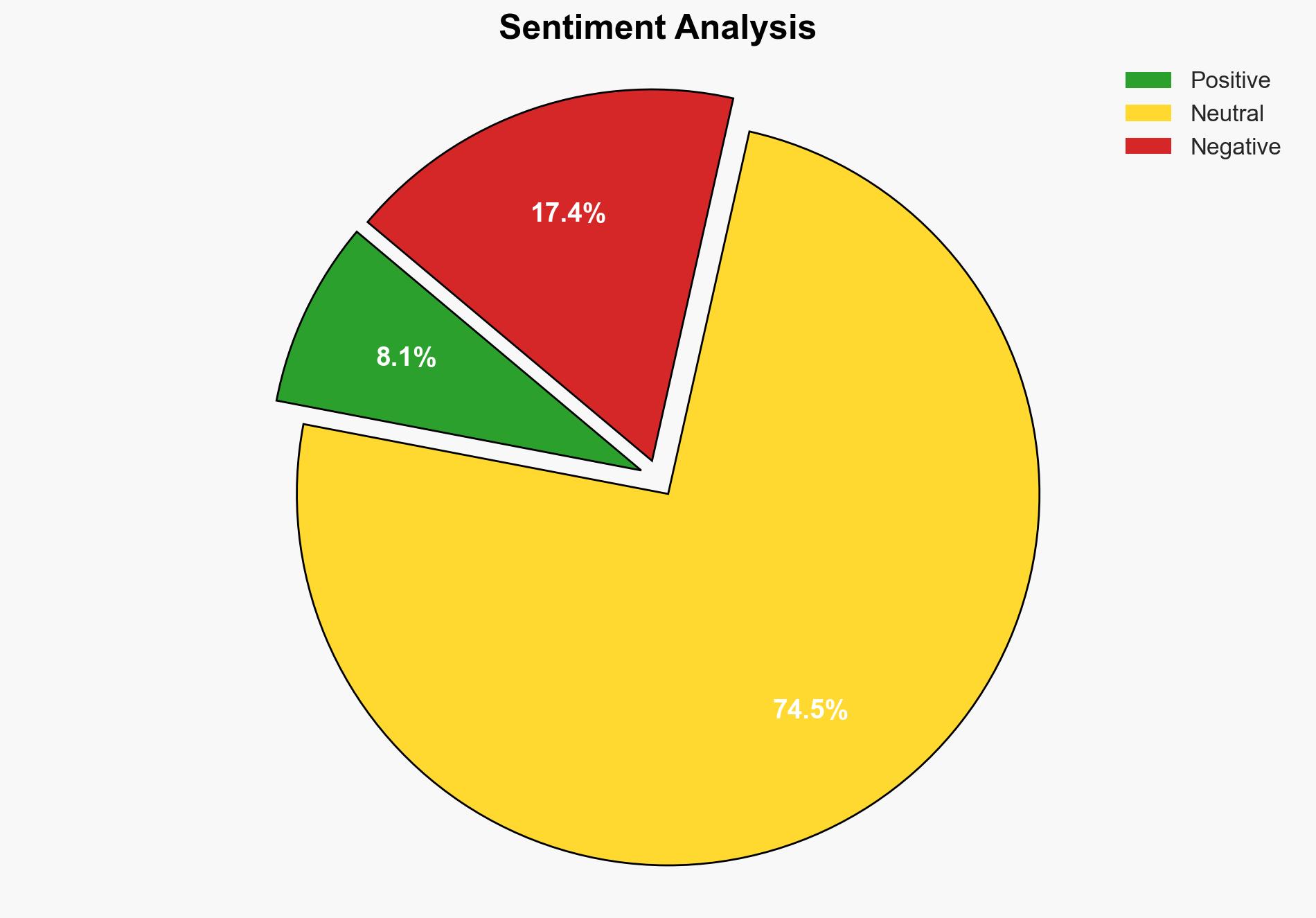How proposed US travel ban could impact travellers as Donald Trump set to target 43 countries – LADbible
Published on: 2025-03-15
Intelligence Report: How proposed US travel ban could impact travellers as Donald Trump set to target 43 countries – LADbible
1. BLUF (Bottom Line Up Front)
The proposed revival of the US travel ban by Donald Trump targets 43 countries, primarily with majority Muslim populations. This move could significantly impact international travel, with citizens from these countries facing strict entry restrictions or outright bans. The strategic implications include potential diplomatic tensions, economic disruptions, and challenges to international relations. Stakeholders should prepare for increased scrutiny and potential backlash from affected nations.
2. Detailed Analysis
The following structured analytic techniques have been applied for this analysis:
General Analysis
The proposed travel ban aims to restrict entry from countries listed in three categories: red, orange, and yellow. The red list includes countries like Afghanistan, Iran, and North Korea, where citizens face a complete ban. The orange list, including Belarus and Russia, allows for restricted visa access under stringent conditions. The yellow list, featuring countries like Angola and Cambodia, provides a deadline for addressing specific issues to avoid escalation to higher restriction levels. The ban’s implementation could lead to increased processing times and heightened scrutiny for visa applicants, potentially deterring travel and impacting bilateral relations.
3. Implications and Strategic Risks
The travel ban poses several strategic risks, including:
- National Security: Increased tension with affected countries may lead to retaliatory measures and heightened security concerns.
- Regional Stability: The ban could exacerbate existing regional conflicts and contribute to instability.
- Economic Interests: Restrictions on travel could impact trade, tourism, and international business operations, leading to economic losses.
Additionally, the ban may strain diplomatic relations, particularly with countries that are key allies or trade partners.
4. Recommendations and Outlook
Recommendations:
- Engage in diplomatic dialogue with affected countries to mitigate tensions and explore alternative security measures.
- Consider implementing technological solutions to enhance visa processing efficiency and security checks.
- Review and adjust regulatory frameworks to balance national security concerns with international cooperation and economic interests.
Outlook:
Best-case scenario: Diplomatic negotiations lead to a revised travel policy that addresses security concerns while maintaining international relations.
Worst-case scenario: The travel ban results in widespread diplomatic fallout, economic disruptions, and retaliatory measures from affected countries.
Most likely outcome: The travel ban is implemented with some modifications, leading to increased scrutiny and longer processing times for travelers from the listed countries.
5. Key Individuals and Entities
The report mentions significant individuals and organizations, including Donald Trump and the New York Times. These entities play crucial roles in the development and dissemination of the proposed travel ban policy.





